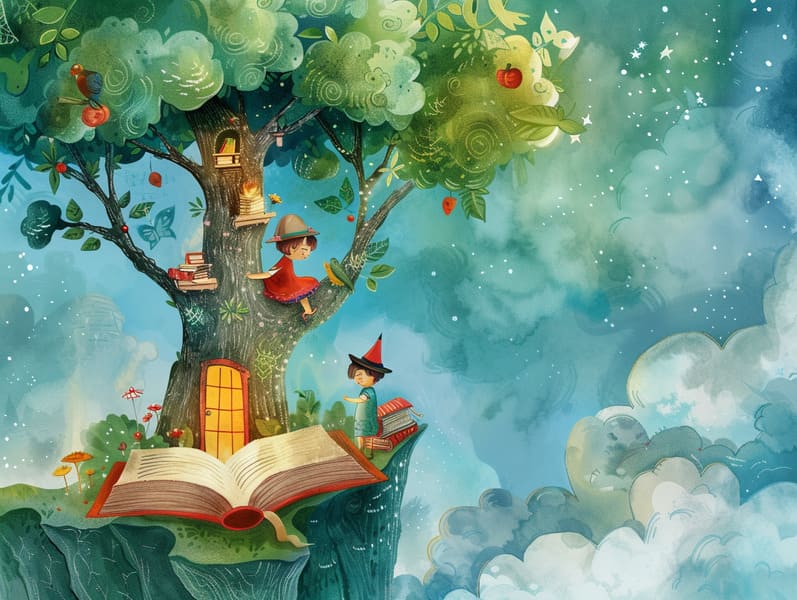The Rise of Best Fairy Tales and Its Unceasing Grace.
The Rise of Best Fairy Tales and Its Unceasing Grace.
Blog Article

Famous fairy tales have ancient roots. These stories have been told from one generation to the next long before they were ever transcribed. They were born from a variety of backgrounds, including European traditions. They were initially told among older generations, often carrying themes and messages mirroring the societal norms and beliefs of the time.
The Brothers Grimm, Jacob and Wilhelm, were among the first to collect many of these beloved narratives. Their volume, "Grimm's Fables," included classics like "The Story of Cinderella," "Little Brother and Little Sister," and "Little Snow White," which have since become cornerstones in the world of famous fairy tales. Similarly, Hans Christian Andersen's charming narratives, such as "The Story of the Little Mermaid," and "The Ugly Duckling," have won hearts worldwide, securing their place in the pantheon of iconic fairy tales.
Despite their historical roots, these tales remain as applicable as ever, especially as kids' bedtime tales. These whimsical stories are now available in different formats, including vibrantly illustrated books, enchanting animations, and free fairy tales online.
Their unwavering allure can be attributed to several enchanting factors:
Life Lessons: Timeless fairy tales often impart important moral lessons. Tales like "The Story of the Boy Who Cried Wolf" teach the benefit of being truthful, while "The Tale of the Tortoise and the Hare" underline the virtues of steadfastness and meekness. These stories offer young readers clear distinctions between truth and falsehood, shaping their moral compass in a subtle yet significant way.
Compassion and Insight: Timeless fairy tales frequently portray personalities facing trials and tribulations, urging listeners to identify with their struggles and encourage their triumphs. For instance, "Beauty and Her Beast" illustrates the merit of looking past the exterior to perceive the true character of a character, cultivating tenderness and insight.
Cultural Awareness: Many traditional fairy tales are interwoven with the cultural contexts from which they arose. Engaging with these fairy tales can provide intriguing perspectives into different backgrounds, enhancing a sense of world respect and appreciation.
Inventiveness and Fantasy: The imaginative elements in ancient fairy tales—supernatural elements—encourage children’s fantastical thinking. These fairy tales take readers to fantastical realms, kindling fantastical thinking and a sense of curiosity that remains a lifetime.
Ancient fairy tales are not only magical but also didactic. They serve as spellbinding tools in developing various cognitive and emotional skills in young ones. When classic fairy tales are told out loud, they advance language acquisition by offering new word meanings and elaborate sentence structures. This practice also strengthens listening skills and concentration, as little ones track the narrative, looking forward to see what happens next.
Furthermore, exploring the themes and characters of fairy tales can promote thinking skills and intellectual skills. Kids are instructed to discover patterns, predict happenings, and get cause and effect. These reflections also aid young readers speak out their thoughts and feelings, nurturing their emotional intelligence.
In today’s digital era, the existence of online fairy tales has made these stories more attainable than ever. Online resources and web apps offer extensive collections of timeless fairy tales that can be enjoyed or heard anytime, anywhere. Fairy tales narrated are particularly widespread, giving an captivating way for little ones to savor these fantastical tales. Narrated books and read-out-loud stories lead characters and settings to life, often enhanced by delightful soundtracks and harmonies that heighten the tale experience.
The unfading fascination of old fairy tales lies in their ability to modify to contemporary times while continuing with their central values. Contemporary adaptations of these stories often integrate more diverse figures and modern settings, making them relevant to today’s audience. However, the central morals of gallantry, warmth, and fairness remain unchanged, continuing to reach listeners of all ages.
Classic fairy tales also offer a sense of reassurance and homeliness. They offer a coherent narrative with a obvious beginning, middle, and end, often drawing to a close with the solving of conflicts and the triumph of virtue over website vice. This reliability can be consoling for children, furnishing a sense of unchangeability in an variable world.
Timeless fairy tales continue to fascinate and edify new generations, maintaining their splendor and significance in modern society. As bedtime stories for kids, they deliver up a perfect blend of wonder and wisdom, advancing moral values, empathy, and creativity. The availability of online storybooks and the in demand status of fairy tales narrated confirm that these timeless narratives remain within reach to new generations.
By perpetuating and narrating these fairy tales, we continue to praise the rich tapestry of legends and cultural heritage. Whether you are exploring a vividly illustrated book, seeing a online library, or listening to an audiobook, the magic of children's fairy tales is always within reach. These stories demonstrate of the consistent ability of narratives and its ability to bring us together across epochs and places.
Regardless if you are exploring a colorful picture book, experiencing a web collection, or listening through an audio story, the splendor of traditional fairy tales is always within reach.
These stories remind us of the unfading magic of stories and its ability to unify us across time and space, forming a connection that fascinates and enlightens alike.